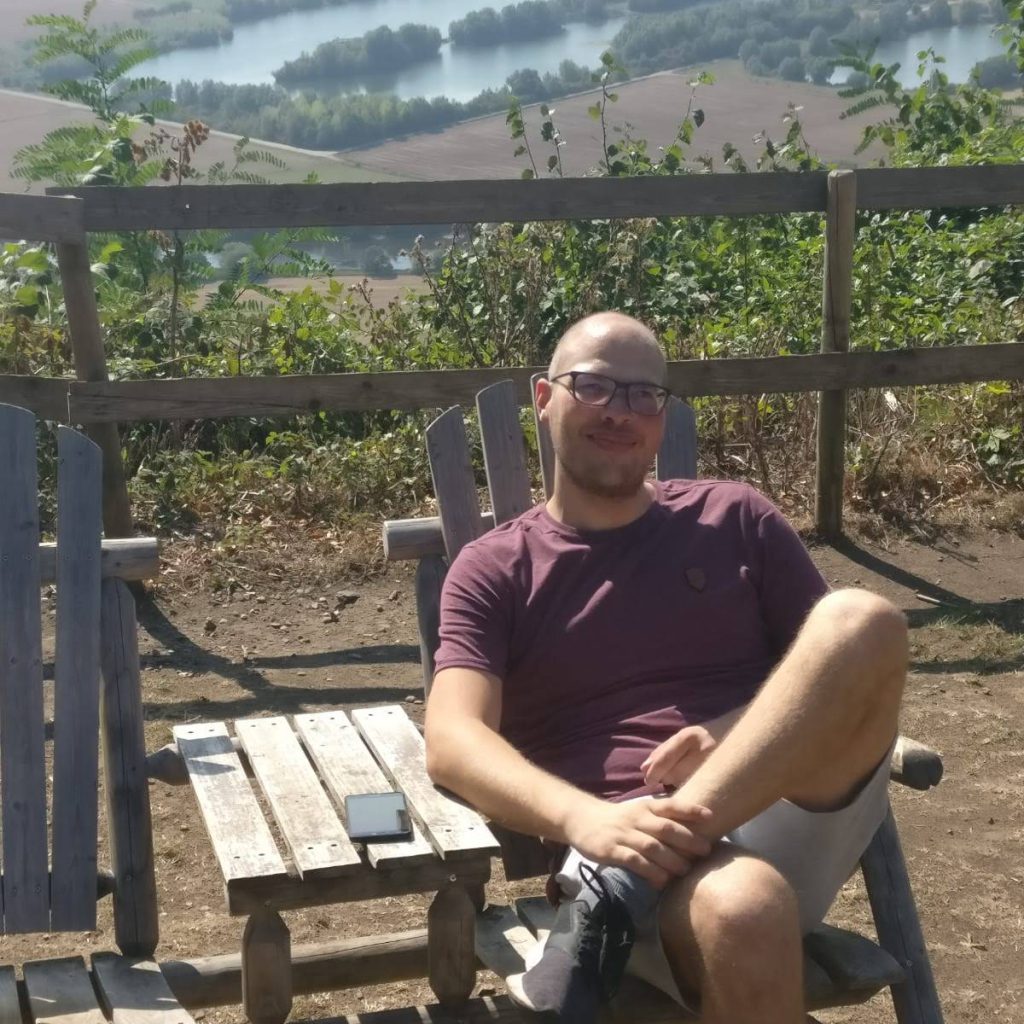About three weeks after Julian’s birth, his mother noticed that something was wrong with his left eye.
It seemed to be bigger than the other one. Because of that, he was hospitalized at the University Hospital Düsseldorf where he was diagnosed with either CMTC or Sturge-Weber syndrome. Since Julian has mixed symptoms of both diseases, the doctors have not been able to give an exact diagnosis. “Actually they still don’t know.” Julian’s mother says.
Glaucoma
As the introduction suggests, Julian has glaucoma that affects only his left eye. Glaucoma is a group of eye diseases, which result in damage to the optic nerve and vision loss. For this reason, his eye pressure has had to be checked regularly by an ophthalmologist since he was a toddler. During this medical examination, you have to sit still with opened eyes and you should not blink. Even if it is only for a short moment that’s nearly impossible for a toddler. Therefore, these eye pressure checks have to be done under anaesthesia for the first couple of years. At the age of three, he managed for the first time to undergo this examination without anaesthesia. To control the inner eye pressure Julian takes eye drops every morning and every evening. In time, the eye drops will stop being effective and surgery will be necessary. So far, Julian has had a couple of surgeries including trabeculectomy*, laser surgery, cryo-coagulation (the use of cryotherapy (low temperatures) to achieve coagulation). His last surgery was an implant called Ahmed Glaucoma Valve.
*Trabeculectomy is a surgical procedure used in the treatment of glaucoma to relieve intraocular pressure by removing part of the eye‘s trabecular meshwork and adjacent structures. It is the most common glaucoma surgery performed and allows the drainage of aqueous eye fluid from within the eye to underneath the conjunctiva where it is absorbed.
** Implantation of Ahmed glaucoma valve is an effective surgical technique to reduce intraocular pressure in patients affected with glaucoma.
Bullying
As a result of his left-sided hemiparesis, Julian had difficulties with walking. “The doctors said I would never walk, but my mother wouldn’t accept it and she looked for therapies to improve my condition and prove the doctors wrong,” says Julian. Fortunately, the doctors were wrong and his mother was right. Physiotherapy, therapeutic horse-riding and therapeutic swimming have helped enormously. Today, he can almost walk normally and you hardly notice anything. However, in his childhood, Julian went through difficult times: “I was bullied regularly at school because of the way I walked. One day some children pushed me into a sand pit and I injured my leg badly. The teachers wouldn’t believe that I was pushed by classmates and assumed that I must have fallen because of my way of walking.”
Laser treatment
At birth, Julian only had red spots on his right wrist but no redness in his face. Later on, red spots developed on his face. At the age of five, Julian and his mother met with a Sturge Weber Selbsthilfegruppe (self-help group). The group strongly recommended trying laser treatment for the large red spots on Julian’s face. Julian’s mother said, “We had done it 4 or 5 times but it was very stressful and eventually it hadn’t helped much. Every time, after laser treatment, his face went black instead of the ‘normal’ red. Gradually, after 6 weeks this would fade, but in the meantime, I covered up all the mirrors in our house so that he could not see himself. To protect him from the bullying at school, I kept him at home but of course, I could not keep him home forever. If I had known this beforehand, we never would have done the laser treatment.”
Julian is now 28 (2018) years old and works as a System Administrator at BWI IT (an in-house company of the Deutsche Bundeswehr) in Germany. “I have dyscalculia and have always had difficulties with maths at school but still I managed to get this job,” he says. “The computers now do the calculations for me so dyscalculia is not a big problem anymore. Occasionally, I find myself in a difficult situation, for example, when I need to do an addition in my head and I don’t have a calculator with me. However most times there’s no problem and I just use my creditcard!”






